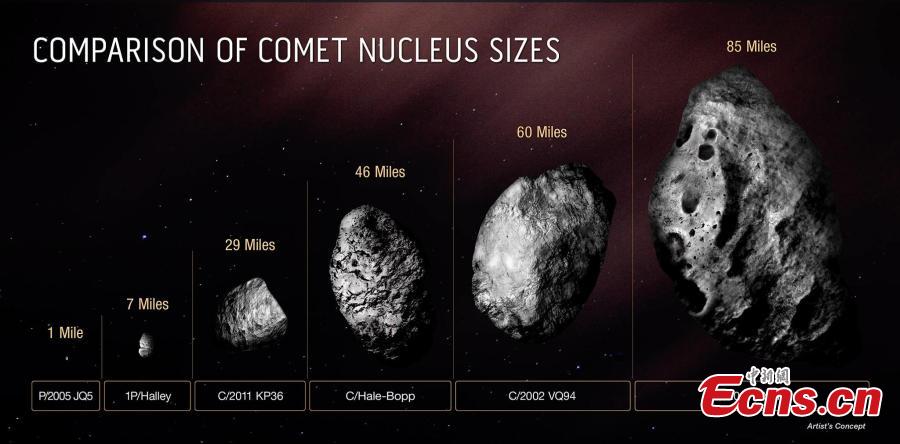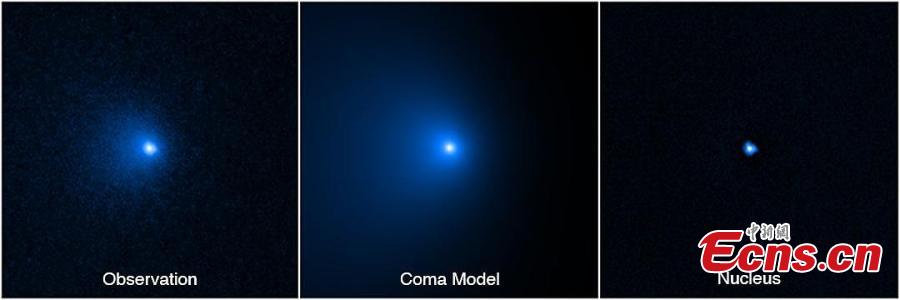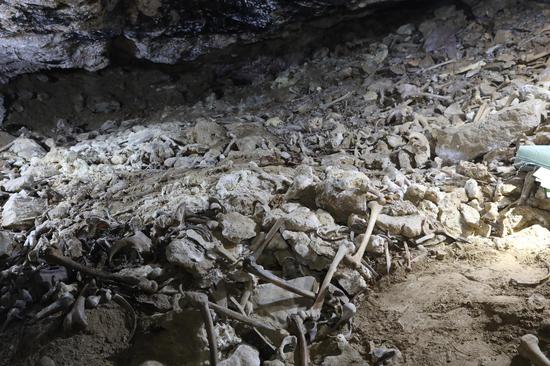
This diagram compares the size of the icy, solid nucleus of comet C/2014 UN271 (Bernardinelli-Bernstein) to several other comets. NASA's Hubble Space Telescope has confirmed the largest comet nucleus ever seen by astronomers. (Photo/VCG)
The estimated diameter of the largest icy comet nucleus is approximately 128 kilometers across, about 50 times larger than that found at the heart of most known comets. Its mass is estimated to be a staggering 500 trillion tons, a hundred thousand times greater than the mass of a typical comet found much closer to the sun.

This sequence shows how the nucleus of Comet C/2014 UN271 (Bernardinelli-Bernstein) was isolated from a vast shell of dust and gas surrounding the solid icy nucleus. On the left is a photo of the comet taken by the NASA Hubble Space Telescope's Wide Field Camera 3 on January 8, 2022. A model of the coma (middle panel) was obtained by means of fitting the surface brightness profile assembled from the observed image on the left. (Photo/VCG)























 京公网安备 11010202009201号
京公网安备 11010202009201号